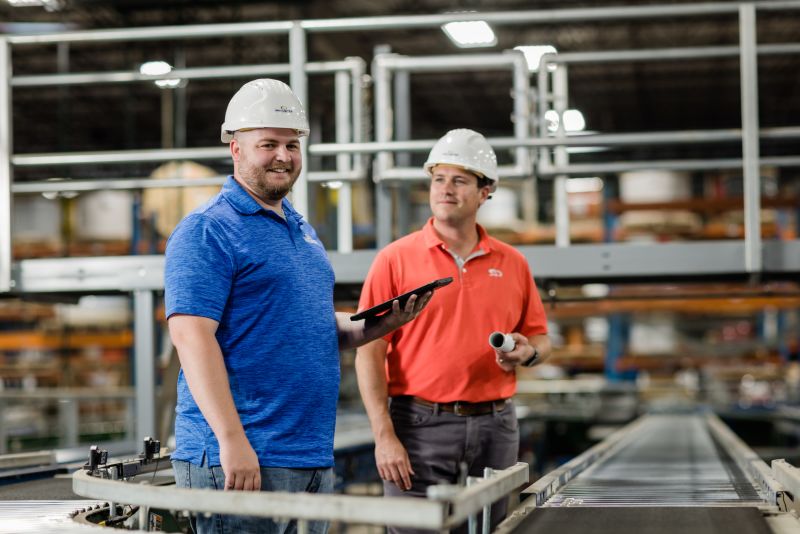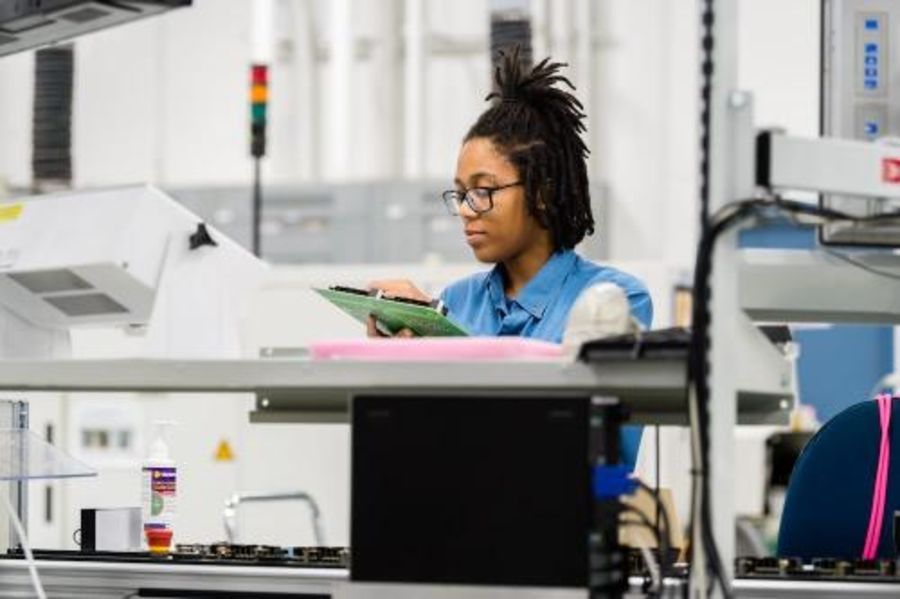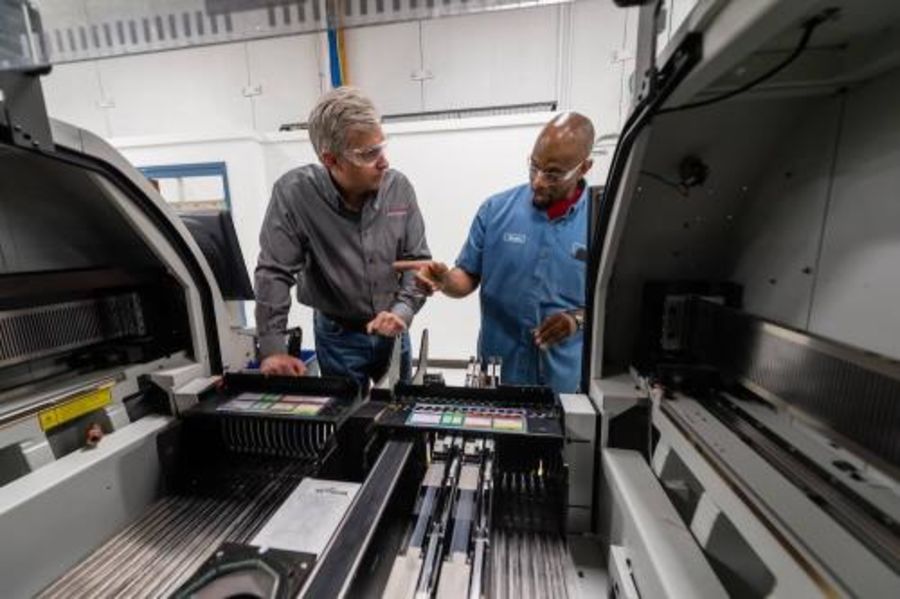Solving the skills shortage requires an innovative approach
- December 26, 2024
- Best Practices
- Automation
Explore the pressing challenges and future opportunities in the manufacturing workforce, highlighting issues in recruitment and employee retention.

Learning Objectives
- Understand the current challenges faced by the manufacturing sector in filling open positions and retaining employees.
- Identify the reasons why careers in manufacturing are perceived to offer limited career prospects.
- Learn about the projected growth and opportunities in the manufacturing workforce despite existing recruitment difficulties.
Skills shortage Insights
- The manufacturing sector struggles with filling 600,000 open positions due to an inability to attract and retain employees.
- Many perceive manufacturing careers as offering limited career prospects, contributing to recruitment challenges.
- Despite current difficulties, the manufacturing workforce is projected to grow, presenting new opportunities in the sector.
What were once warnings about impending talent shortages in the industrial sector are now real challenges for many companies. In Dec. 2023, U.S. manufacturers had 601,000 open positions, according to the U.S. Bureau of Labor and Statistics. In the National Association of Manufacturer’s latest quarterly survey, more than 7 in 10 manufacturers said the inability to attract and retain employees was one of their biggest challenges.
Certainly, the changing nature of production is a key contributor to the skill shortage. Shifts to more digitalized and sustainable operations are creating a greater need for workers with specialized skills and knowledge who are in short supply. But experienced workers also continue to retire, and there simply aren’t enough people entering the workforce who envision a career in the industrial sector to replace them.
Just as there isn’t a single issue causing the talent shortage, there also isn’t a single solution for solving it. Instead, companies need a multi-faceted strategy that uses both talent and technology to build, support and empower their workforce.
Tapping multiple talent wells
Industry has long relied on colleges and universities to supply new generations of engineers and other talent. But considering how much is changing in industrial operations and in the workforce today, academic institutions could use an assist from industry to help keep the talent pipeline flowing with candidates who want to pursue a career in the sector and have the right skillsets.

While perceptions of manufacturing have improved in recent years, too few people are still viewing it as a preferred career option. For example, about 6 in 10 consumers think manufacturing offers limited career prospects. Companies can change this mindset and put more students on the pathway to a career in the sector by promoting the career opportunities that await them and showcasing the innovative work that they can be a part of — from driving digitalization projects using disruptive technologies to helping create cleaner, greener industries.
Industry can also help colleges and universities by working with them to evolve their programs to address changing talent needs. There are already examples across the country of what this collaboration can look like.
At the Purdue Polytechnic Institute, industry advisers and partners have supported the new Smart Learning Factory, which provides high-tech, hands-on experiences for students to learn about intelligent production operations, and new learning pathways for students, like a major in smart manufacturing industrial informatics. Industry is also investing in efforts like the University of Wisconsin-Milwaukee’s Connected Systems Institute (CSI), which helps bolster the smart manufacturing talent pipeline through education, collaborative research and state-of-the-art lab facilities.
But industry isn’t only working with academia to build its workforce. It’s also turning to new and nontraditional talent sources — like retired military members. The Academy of Advanced Manufacturing, for example, is helping upskill U.S. military veterans in just a matter of weeks to prepare them for roles in advanced manufacturing. Companies hiring employees from these programs can gain peace of mind by filling key roles and take pride in the fact that they’re providing career opportunities to veterans.
At the same time, companies must look inward for ways to develop talent in today’s tight labor market. In the area of sustainability, the number of skilled workers isn’t keeping pace with the rising number of jobs. As a result, manufacturers will need to explore opportunities to upskill current employees who have similar skills or a passion for sustainability.
Digitalization is also creating demand across industries for specialists in areas like data and analytics. Beyond hiring for these roles, companies are also upskilling their existing employees in a variety of ways, from hiring training specialists that can create customized training plans to efforts like the digital academy that PepsiCo created to help employees use data and analytics in their jobs.
Technology as a workforce enabler
The digital transformation of industrial operations that’s underway right now puts new demands on workers, requiring them to learn new technologies and be able to thrive in more data-driven roles. But there are ways to simplify digital transformation, like with systems and devices that layer easy-to-use tools and intuitive user experiences over complex technology. This can simplify how workers interact with technologies and help them work efficiently.

Industrial control systems with “smart objects” are a good example. Smart objects are configured in control system design tools and can significantly ease data management for engineers by organizing data and automatically triggering data collection. Robot integration solutions can also help engineers more easily connect robot and control systems — or even combine them into a single system. This can help accelerate deployments, ease access to analytics and simplify operations.
New capabilities that digital transformation makes possible can also simplify work for engineers and the end users they serve.
One of those capabilities is a digital twin, or a virtual replica of a physical entity or process. With a digital twin of a machine, engineers can build, test and prove their machine first, before they order parts for it or cut steel. Later, the digital twin can be used to virtually commission the machine to help uncover issues before the machine is built and sent to a customer. And once the machine is operational, the digital twin can be used to detect anomalies and test production changes before they’re physically implemented.
Increasingly, technologies are also being made with the smart capabilities that users want already built in — like smart drives with predictive analytics. The drives can help prevent unplanned downtime by modeling the predicted life of their cooling fans and notifying personnel when a fan reaches a certain percentage of that predicted life.
Similarly, some industrial control systems are designed with special coding that allows energy data from drives and other devices to be made instantly available. This essentially allows the devices to operate as smart meters, giving users better insights into their energy usage as part of their sustainability efforts.
Embracing workforce transformation
Overcoming today’s widespread skills shortage requires rethinking what work is. By creating more connected workers, companies can create more empowered workers who can act faster and solve problems in new ways.
Bringing design and development work into the cloud, for instance, allows engineers to collaborate on projects across offices and time zones. And by allowing production operators to connect with remote experts in an augmented reality (AR) environment, they can get help troubleshooting complex issues and do unfamiliar tasks. Technology like a computerized maintenance management system (CMMS) can also help automate maintenance tasks, allowing maintenance teams to work more efficiently and spend less time on tasks, like creating and translating work orders, tracking down operators and digging through filing cabinets.
This transformative moment is also an opportunity for companies to align their priorities with those of their workforce in a way that benefits both sides.
Companies need only look at two topics that go hand in hand: safety and sustainability. Clearly, employees care about their own safety. A majority of employed adults also say they want the companies they work for to invest in sustainability.
Today, technologies like contemporary safety systems can help employees work safely without reducing productivity. Using technologies that reduce risks to employees while also taking steps to minimize their environmental footprint can help companies attract prospective employees — and retain current ones — by showing them that they share the same values and goals.
Steve Ludwig is the global strategic marketing manager at Rockwell Automation. Edited by Tyler Wall, associate editor, Control Engineering, WTWH Media, [email protected].